Menu
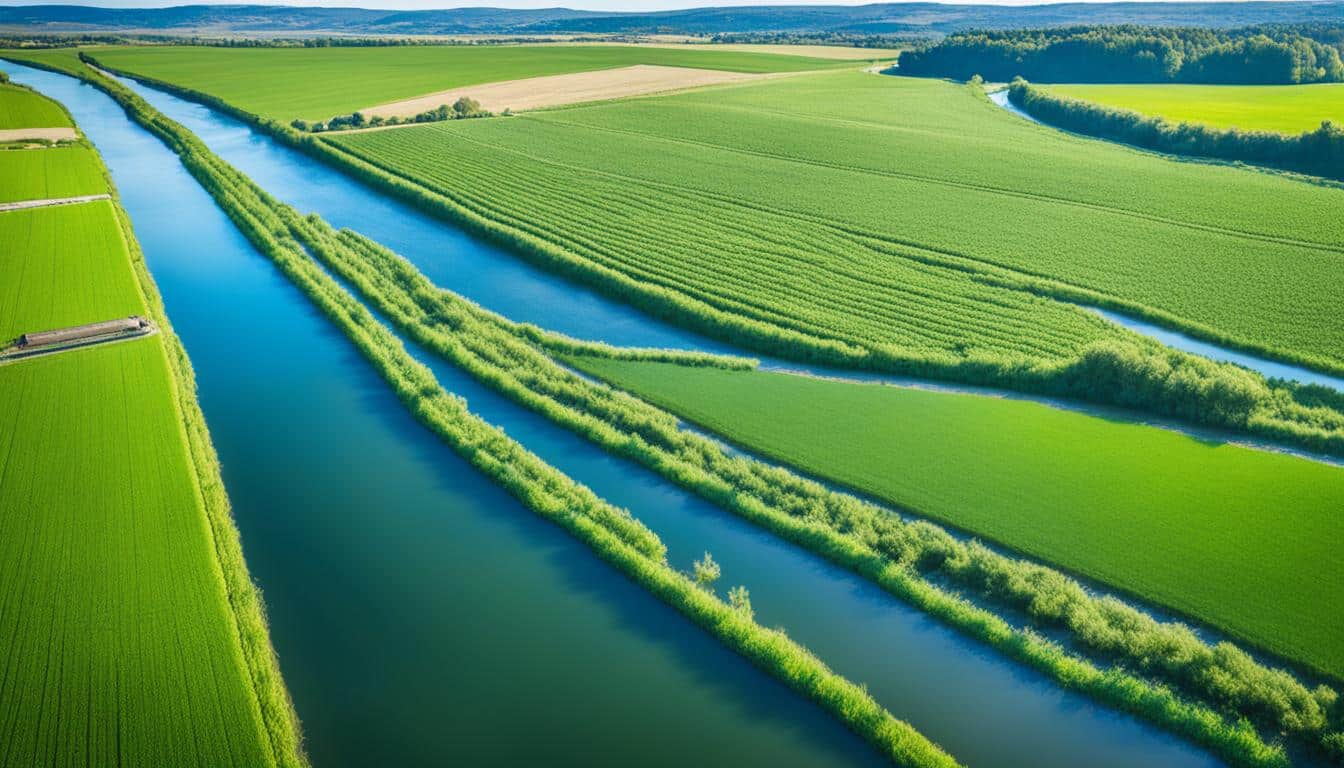
It has been more than 30 years since a thorough look into the risks of using water in farming was made. But now, the book “Water Quality in Agriculture: Risks and Risk Mitigation” is changing that. Launched at the Rome Water Dialogue on October 5, 2023, it’s a major collaboration. The Food and Agriculture Organization (FAO) and the International Water Management Institute (IWMI) presented this guide. It focuses on the critical need for better water practices in farming.
This book covers key guidelines for water quality. It looks at using wastewater and brackish water. It also helps with dealing with dangers from harmful germs and chemicals. The book is very important now because many countries are growing quickly. This growth shows why we need to farm in ways that are good for the environment. Dr. Sasha Koo-Oshima from the FAO says we must use these guides for checking water quality. This is to protect our health and nature.
It’s key to make sure the water we use in farming is top quality. A report called the ‘Water Quality in Agriculture: Risks and Risk Mitigation’ report shows why strict rules on water quality are needed for farming in different places.
Global farming rules say water for farming must have very few pollutants. Managing water’s quality is crucial. More than 90 harmful substances must meet the EPA’s rules set back in 1974. This is important for over 2 billion people living in dry areas. It helps prevent about 505,000 deaths yearly from bad water.
Also, the EPA has rules to make water taste, smell, and look better. This is for water we all drink. Following these rules cuts down on diseases and other health issues.
The right amount of alkalinity in water for plants is critical. It should be between 30 and 60 ppm calcium carbonate. But, in places like Massachusetts, water can be too alkaline. How to fix it? Use certain acids to balance it out.
Groups like UNESCO and UN Water help set global farming standards. They bring experts together to talk and find real solutions for water quality in farming.
Over time, international water quality standards have changed a lot. The FAO has carefully kept records of these changes. It has combined many detailed reviews and updates. The cause of most issues in rivers and lakes is agriculture. This sector also heavily impacts estuaries. Therefore, rules about global water pollution and agricultural water management keep getting stricter.
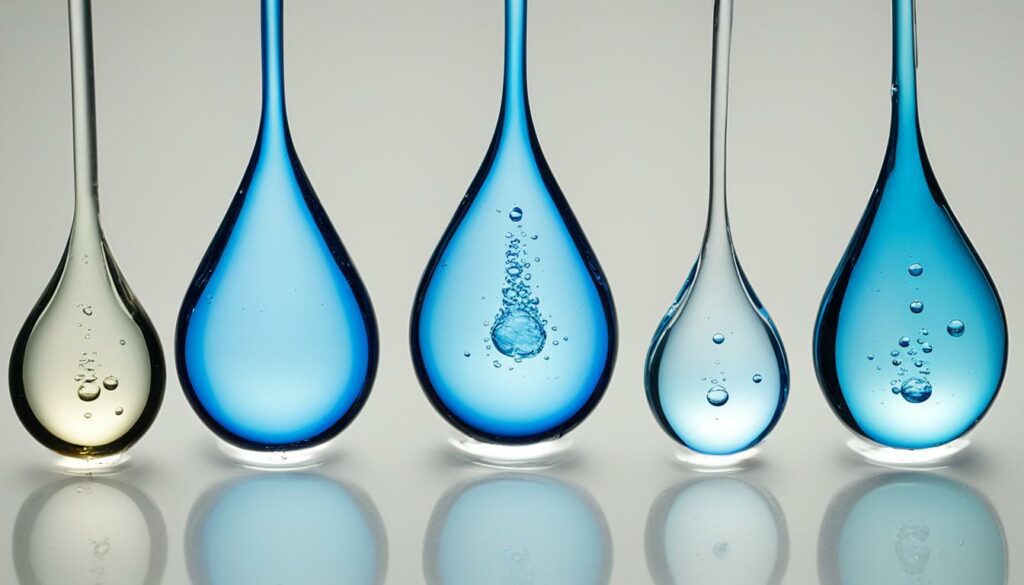
Studies from a few decades show we’ve made progress. We now release around one billion pounds less of toxic pollutants each year. From 1970 to 1992, there was also a big drop in ammonia in water from sewage plants. The number of people helped by these plants has grown too. In 1970, it was 42 percent, but by 1998, it reached 74 percent. This shows we need to keep improving how we manage water in farming.
Books such as ‘Water Quality for Agriculture’ and ‘Wastewater Treatment and Use in Agriculture’ have been key. They were written in 1976 and 1992. They provided the foundation for handling water in farming. This includes using salty water and fighting against disease-causing germs. Thanks to them, farming can follow sustainable ways in the future.
We know a lot about the main causes of water issues. For example, sediment and nutrients harm rivers most. Nutrients also heavily pollute lakes and estuaries. Over 218 million Americans live near polluted water. This shows we must apply the new water quality rules well.
The main issues with water are sediments, germs, and nutrients. Pesticides come tenth. So, it’s crucial to have clear, updated rules. Also, 40% of the U.S.’s big estuaries have too many nutrients. These facts remind us we need strong global rules for water use on farms.
Essential organisations worldwide set and uphold global water quality standards for agriculture. They work together to ensure water in farming meets set standards. This includes practices that protect the environment and handle economic issues.
The FAO plays a vital role in the setting these standards. They publish guides and reports that offer help globally. Their work focuses on managing water quality to fit agricultural needs, while reducing pollution risks.
| Organisation | Key Contributions | Notable Publications |
|---|---|---|
| FAO | Establishing guidelines and providing technical assistance | ‘Water Quality in Agriculture: Risks and Risk Mitigation’ |
| IWMI | Research and fieldwork on sustainable irrigation practices | ‘Water Quality Management in Agriculture’ |
The FAO and IWMI also work with governmental and non-governmental groups. Together, they update and enforce these important standards. This cooperation results in a thorough approach to meet water challenges in agriculture.
Global guidelines for managing water in agriculture are key to keeping farming sustainable and not harming the environment. The book “Water Quality in Agriculture: Risks and Risk Mitigation” was introduced at the Rome Water Dialogue on October 5, 2023. It was a joint effort by the FAO and IWMI. It presents detailed agricultural water management guidelines for crops, livestock, and aquaculture.
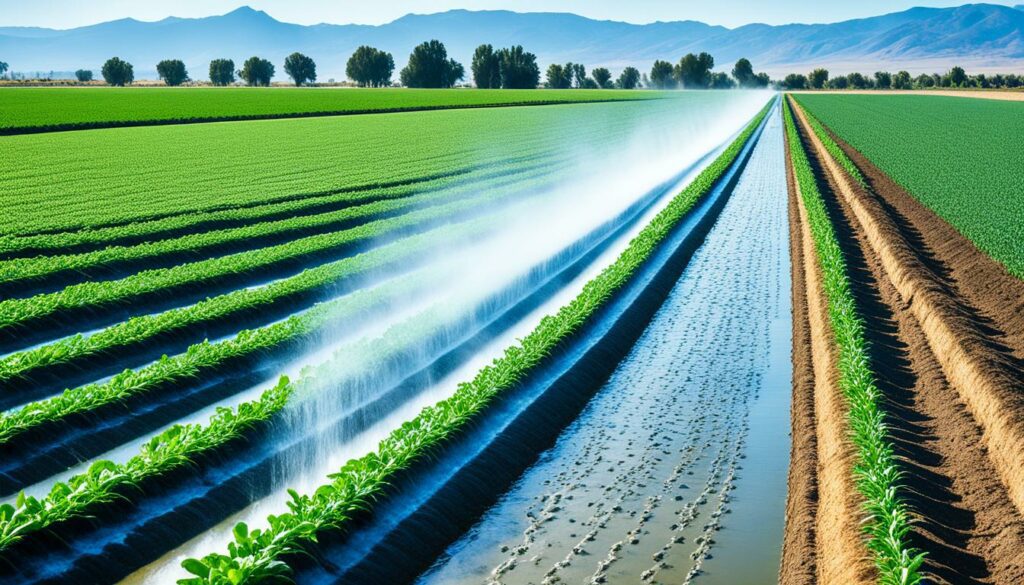
The guide in the book looks at how to find and deal with risks from harmful germs and chemicals in the water used in farming. Doing these checks help meeting global agricultural sustainability standards, which are part of the 2030 Agenda for Sustainable Development.
It’s meant for anyone in charge at national or subnational levels, farmers, project leads, helpers, engineers, and teachers. It’s of great use for many areas. By tackling big issues like feeding more people, keeping farmers’ lives stable, and protecting nature, it shows how important water management is.
“Water Quality in Agriculture: Risks and Risk Mitigation” is important because it focuses on assessing risks and how to lower them, the first to do so in 30 years. It also uses previous works, like “Water Quality for Agriculture” and “Water Desalination for Agriculture Purposes.” Plus, it includes more recent FAO rules for using salty water and fighting antimicrobial resistance too.
| Key Area | Volume/Impact |
|---|---|
| Worldwide Volume of Recycled Water (2010-2015) | Increased from 33.7 million m3/d to 54.5 million m3/d |
| Recycled Water Allocation | 91% for irrigation of crops and pastures; 9% for cleaning piggeries and providing drinking water for stock and dairy |
| Potential Irrigated Land by Municipal Wastewater | Approximately 15% of the world’s irrigated land, amounting to about 4 x 105 million m2 |
| Agricultural Wastewater and Drainage | 32% of the world’s water withdrawal |
It’s crucial to apply these guidelines well. After all, agriculture takes up 32% of the water used worldwide, leading to a lot of waste and pollution. Good water management helps the environment and makes sure farming can continue in a good way for future generations.
It’s crucial to know the risks in using water for farming and how to lower them. This helps keep people and the environment safe. We will look at the main worries and how to deal with them, following global water quality rules for farming.
Studies show that farming water can make food unsafe. Harmful microorganisms in this water can be dangerous. The use of water tainted with household waste is at the top of the list for food safety threats.
We must follow the WHO’s advice on wastewater use to be safe. This is key for a smart approach to risk and safety in farming. By doing this, we keep our food and its eaters safe.
Chemicals in farming water are also risky. Farmers need to check if the water they use is safe. They should also meet the international water quality standards for agriculture.
To handle this, checking water often and knowing the risks is important. We use WHO’s tips to deal with these issues well. This way, we protect people and the land through smart farming.
Too much salt in water is bad for farms. It’s important to keep the water quality high worldwide. This needs better ways to water plants and using plants that can handle salt.
These steps help lower the danger of salty water for farming. They make farming tough and green.
To make good use of water on farms, we need to understand risks. We must follow the world’s rules on water for farming. This way, we farm well and keep our land strong.
Keeping a close eye on the water’s quality in farming is extremely important. It helps with doing farming in ways that don’t hurt the environment. Thanks to new tech, farmers can check their water’s health and keep their work going sustainably.
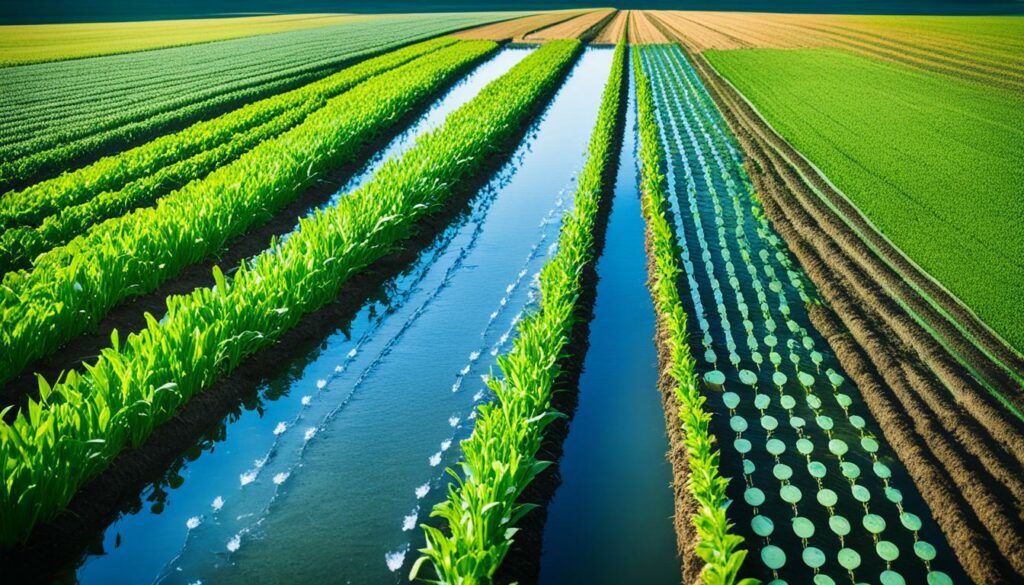
New technologies have made checking water quality in farming much better. Things like remote sensing and smart sensors are changing the game. Now, farmers can keep an eye on their water all the time. This tech gives them a full look at what might harm their water, like nitrates and phosphates.
“The adoption of these technologies not only aids in meeting regulatory standards but also plays a vital role in early detection and mitigation of potential water quality issues.” – Dr. Sasha Koo-Oshima, FAO.
Trying to keep water clean is key for farmers. They should use modern testing kits to check water often. Plus, having smart sensors in the water is a good idea for getting regular info on its quality.
By doing these things, farmers can keep the water they use safe and good for the earth. This helps their farms stay sustainable and protects the environment too.
| Region | Water Bodies Monitored | Primary Threats |
|---|---|---|
| United States | Over 2900 water bodies monitored | Nitrate and phosphate pollution |
| Ireland | 60% of 4810 water bodies monitored | High levels of nitrates and phosphates |
| Canada | Varies by province | Regional water quality standards |
Using sustainable methods for watering is vital to keep water pure. In Massachusetts, water usually has a pH level between 7 and 8, which is basic. This kind of water is okay for plants in greenhouses, but it’s very important to keep the pH between 5.0 and 7.0 for watering.
To handle water’s pH levels, farmers use acid injection techniques. They add acids like phosphoric and sulfuric to adjust high alkalinity. A pH of 6.0 is perfect because it helps pesticides work well.
Agriculture is responsible for using lots of water worldwide. As we plan to raise food production, managing water better is a big task. The OECD shares policies and tips on how countries can deal with water in farming. It looks at places like Australia and the EU to see what works.
The OECD also asks questions about using water better in farming. It checks the effects of water trading and the idea of a water footprint globally. The aim is to join up good watering methods with farming that looks after the environment.
By working together and using smart agricultural ways, we can make more food without harming the planet. This global push is key to keeping our water safe for those who come after us.
Governmental authorities are vital in setting and making sure water quality standards are met in farming. They make sure international farming regulations and top methods are used everywhere. This helps deal with many water quality issues in different farm types.

The U.S. Environmental Protection Agency (EPA) is a great example. It has strict rules for more than 90 pollutants in water we drink, following national guidelines. They also ask for state water quality reports every two years. This info goes into a big report for Congress, showing where we need to do better.
The EPA also runs the Lead and Copper Rule. It checks about 68,000 water systems for lead. This helps keep people safe, especially in farming areas where water quality can affect nature and health.
| Organisations | Roles | Impact |
|---|---|---|
| EPA | Regulates contaminants, mandates water quality reports, enforces Lead and Copper Rule | Ensures safe drinking water, mitigates harmful contaminants in agricultural settings |
| UN Water and UNESCO | Develop global water quality guidelines, foster international collaboration | Enhance water quality management globally, build consensus on standards |
| International Boundary and Water Commission | Manages wastewater plants, addresses cross-border water quality issues | Improves water treatment along borders, supports bi-national initiatives |
UN Water and UNESCO work globally to keep an eye on water quality. They team up to make guidelines for safe farming.
They focus on fixing water issues like lead, farming waste, and dangerous algae. All this keeps water clean for life and crops. It’s a big job that needs work from local to global levels.
Governments must make sure water is safe for a healthier world and better farming.
Overall, governments are key in setting and strengthening water quality rules. As problems change, so should our ways of keeping water safe for everyone and for growing food.
Exploring different regions shows smart ways to use global water quality rules on farms. Each example gives a custom solution to local problems. This highlights how solutions that fit the place well are key to using water wisely.
India is working hard to meet world water quality standards in farming. It’s concentrating on safer ways to water plants, focusing on the quality of water for crops. They carefully check the water and use tech that saves water, helping for the long haul.
South Africa has dealt with many water problems, such as service outages and changing water levels. They got better in getting water to homes, with 83.8% of homes now having water nearby. To use water better and fight pollution, they started trading programs. These not only save money but also push for water-smart farming.
Mexico is tackling big issues like not enough water, which is made worse by cities growing and the climate changing. To help, they follow strict global rules on water pollution and encourage using clean sewage water in farming. These steps make farming more sustainable even with little water.
| Country | Main Strategy | Outcome |
|---|---|---|
| India | Sustainable irrigation practices | Improved water quality and crop yield |
| South Africa | Point source-nonpoint source trading programs | Cost savings and reduced pollution |
| Mexico | Reuse of treated wastewater | Enhanced water management |
Low and middle-income countries have many issues meeting global water quality standards. The lack of infrastructure is a big obstacle. Most places don’t have enough resources to treat water to the needed level for farming. So, ensuring safe water for crops, and thus food safety, is difficult.
The financial burden on these countries is also massive. Investing in new water treatment tech is hard without much money. This makes improving water management for farming very challenging.
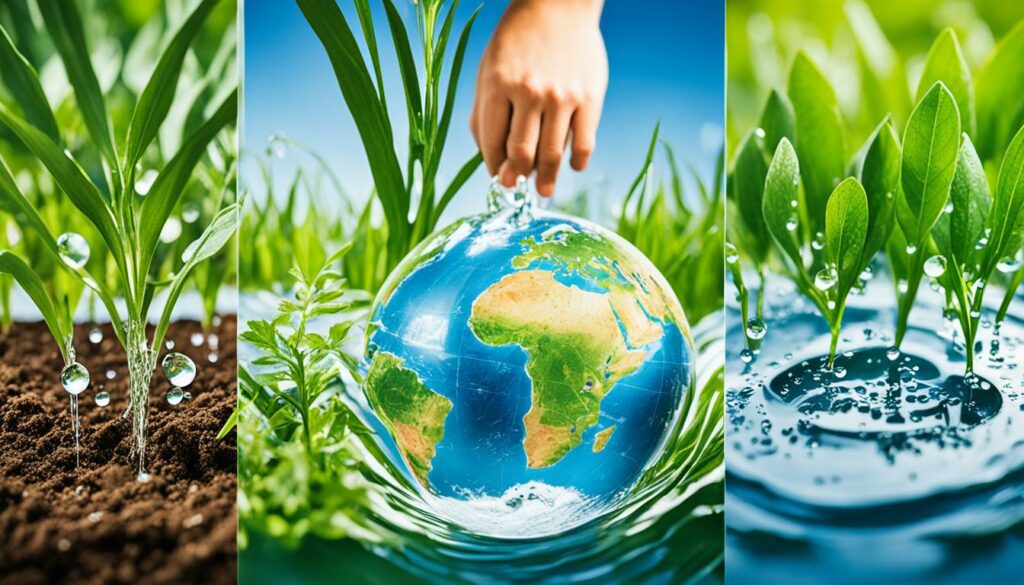
Urbanisation makes the problem worse. As cities grow, they need more water, which can clash with what’s needed for farming. Often, water quality for agriculture is not given enough importance, hitting rural areas hard.
For good harvests, clean irrigation water is essential. But, farming methods in many poor countries harm the water and soil. If crops are watered with polluted water, they can be dangerous to eat. This affects not just plants but also human health.
Many areas use untreated water for farming due to scarce resources and lacking facilities. While this may solve immediate water shortages, it creates new, serious problems over time. It’s crucial to find better ways to manage water use for the sake of the environment and health.
| Challenges | Impact |
|---|---|
| Limited Infrastructure | Inadequate water treatment, affecting crop irrigation |
| Economic Constraints | Difficulty in investing in advanced water treatment technologies |
| Rapid Urbanisation | Increased water demand, leading to conflicts between urban and agricultural needs |
| Unsustainable Practices | Pollution affecting soil and water quality |
| Use of Untreated Wastewater | Long-term environmental and health risks |
Overcoming these issues requires focused help for these countries. We need to build their capacity to meet water quality standards. By improving infrastructure, aiding financially, and encouraging eco-friendly farming, these nations can move closer to the Clean Water SDG (SDG6).
Today, blending water quality standards with sustainable farming is key. It requires careful water management, from sources to fields, meeting specific water quality goals. This ensures healthy crops and less harm to nature.
A shocking fact: over 10% of people worldwide eat foods grown with dirty water. This shows why strict rules for clean water in farming are a must. Take Asia, where more than 70% of irrigation waters are used for growing paddy rice. It’s crucial for South and Southeast Asia’s water sources. It also shows the big role of meeting water quality standards.
Bodies like the WHO and US EPA give rules for safely using waste water on crops. For example, South Korea made guidance on water quality in 2005 and set specific rules for waste water use in 2011. California leads, treating waste water to clean levels, as if for drinking. This sets an example for ensuring farm water meets high standards.
In places like Yemen and Saudi Arabia, techniques like geochemical models help check if water is safe for farming. California started this in 1918. They’ve been a pioneer in using wastewater carefully for crops. Their long tradition highlights a strong link between farming practices and water quality standards.
Following these rules keeps us all safe and our planet healthy. A fitting example is the effort on waste water use in the United Arab Emirates and South Korea. They show the world’s drive to make sure farm water is of the highest quality. This promotes safe farming for a healthier planet.
Climate change has a big impact on water used in farming. As our world’s weather becomes more unpredictable, the amount and quality of water we need for farming change. Now, studies show that global agricultural sustainability standards have to change too to keep farming possible and protect water quality.
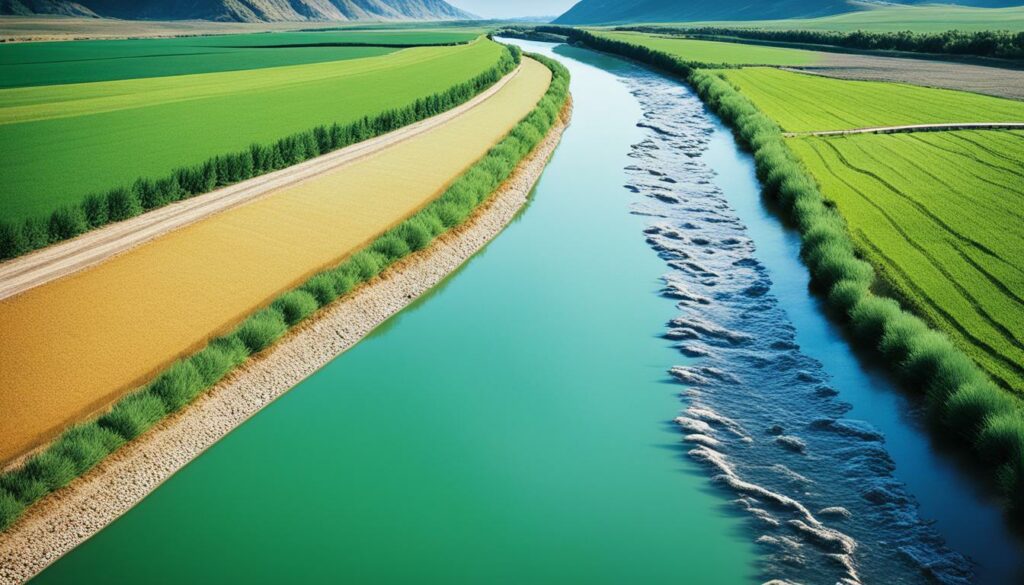
One big area affected by climate change is how much water is available. Places around the world are seeing big changes in their water supplies. For example, a study in 2014 found that flooded soils were being polluted by heavy metals and harmful compounds. This is a serious threat to international water quality standards agriculture. Also, in places like Sialkot, Pakistan (2009) and the city of Karachi (1996), there are worries about clean groundwater. This shows we need smart plans to protect our underground water sources.
Climate change leads to new weather patterns that can hurt farming. For example, China saw heavy metal pollution in 2014, and the River Nile in Egypt had too many trace metals in 2013. These are bad for water that farmers use. Also, the United States expects more heat and more rain by 2100. This could mess up global agricultural sustainability standards. So, we’ll need new ways to farm that protect water quality. These methods must match international water quality standards agriculture to keep our farms and the environment healthy.
Keeping to water quality rules in farming has many sides to its economic impact. It looks into the costs of following these rules and shows how sticking to them can pay off in the long run.
Getting water quality up to scratch at first can cost a lot. It involves high-level ways to treat water like membrane filtration and reverse osmosis. These methods are very important because they make water treatment more effective. The US EPA has strict rules, needing big investments in keeping an eye on things and following the rules to make sure the water is clean.
Although making water quality better can be expensive at the start, the long-term paybacks are big. Following the rules helps lower the number of waterborne diseases. This cuts the healthcare bill for treating illnesses like stomach problems, hepatitis, and some cancers.
“Investments in drinking water quality standards lead to a reduction in healthcare costs associated with treating waterborne diseases.”
What’s more, companies get a steady water supply, which means less stoppage in making things and more trust from buyers. Places that use a lot of water for their jobs, like farming and tourism, avoid losing a lot of money because of bad water quality. Also, sticking to the water rules helps the economy grow and keeps the environment in a better state.
| Economic Aspect | Impact |
|---|---|
| Healthcare Costs | Reduced by fewer waterborne diseases |
| Business Continuity | Enhanced through stable water supply |
| Community Economic Health | Protected through mitigated risks to water-reliant industries |
| Productivity | Increased due to reliable water quality |
Spending on these water standards, which match global farming rules, shows how crucial it is to focus on water quality. By being proactive now, we set the stage for long-lasting economic gains and a healthier planet. This ensures a bright future for farming and beyond.
Fixing water quality issues in farming is key for sustainability and reaching the Sustainable Development Goals (SDG 6). The report “Water Quality in Agriculture: Risks and Risk Mitigation” was released at the Rome Water Dialogue on October 5, 2023. It shows how important tech is in dealing with poor water quality.
This report looks at farming crops, raising animals, and growing fish. It uses past information from the FAO about water issues. New tech in checking, treating, and caring for water helps farmers follow global rules better. It also helps them farm in ways that protect the planet.
One of the big problems is half of the world’s household wastewater isn’t treated. This dirty water mixes with farm run-offs, making things worse. This hurts the environment a lot in places where people are moving to cities fast and need more water.
To fix this, special filters, adding acids, and smart tech are being used. These high-tech ways help clean water better. This helps the farming in places where water pollution is a big issue.
Looking at lots of studies, the report is a great guide. It helps everyone involved find out how to fix water problems. From finding metals in Ghana’s water to using AI to use water smarter, these tech fixes are very important. They keep the water clean and help farming stay green.
Monitoring ensures the water meets safety and environmental rules. It stops pollution and keeps crops and animals safe. This leads to farming that lasts a long time without hurting the planet.
Agricultural water quality criteria check if water is good for farming. This includes looking at things like germs in the water and harmful chemicals. The aim is to have safe farming methods.
New, better rules tackle today’s farm problems like not enough water and pollution. These rules make sure farms work in a way that doesn’t harm the future. They make farming strong worldwide.
The FAO is key in making sure water used in farming is safe. They write rules, do research, and push for smart water use. This work helps everyone farm in ways that are good for the world.
The IWMI helps a lot by studying water issues in farming. They come up with better ways to use water and work with others to find answers. Their goal is to make farming more efficient and kinder to the environment.
Using water in farming can make the water dirty with germs, chemicals, and salt. This can hurt what we grow and the land. That’s why it’s important to have tough water rules and good ways to keep the water clean.
Farmers can use new technology and follow expert advice to check water quality. They should test water often and use ways that protect the water. This keeps the water safe for farming and growing food.
To keep water clean, farms can use water wisely and avoid too many chemicals. They can also use the latest water-saving ideas. These actions help keep water clean for the long term.
Governments make sure farmers follow the rules by making laws, checking farms, and helping them do the right thing. This helps everyone use water in ways that are safe and good for the land.
Yes, some countries are doing well. For example, in **India**, they’ve used smart water management to make farming water better. **South Africa** and **Mexico** are also using good methods to use water wisely. This makes their farming use water in a better way.
Many countries have a hard time because they lack money and their cities grow fast. This makes following the global water rules tough. They need help to be able to use water well and keep it clean.
Smart ways to water crops, like drip systems, are part of using water well and not making it dirty. Also, checking water quality often and doing things to stop pollution helps. This way, there’s enough clean water for farming without harming the environment.
Climate change can make water less available and change how much water we get. This can make the water less clean and harder to use. People need to find new ways to manage water so that farming stays good for the long run.
Following water rules might cost money at first but it makes farming better in the end. By spending on new tech and ways to use water, farms can make more food without harming nature. This leads to farming that’s better for everyone.
There are many high-tech tools to check and treat water in farming. Plus, new ways to water crops are also there. These help farmers keep the water safe and use it in ways that last a long time.